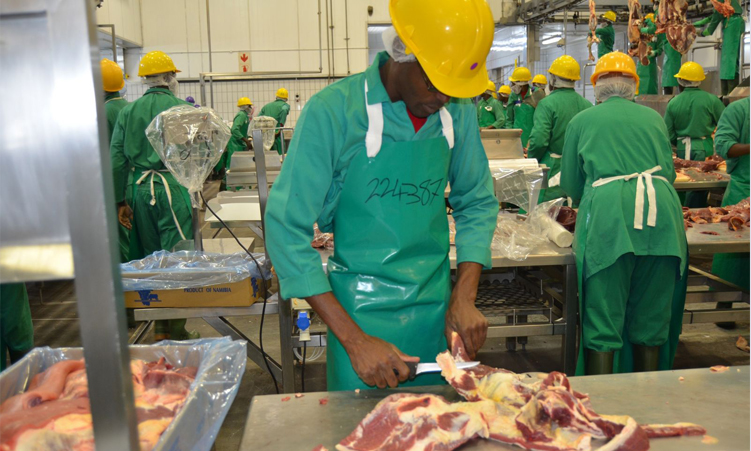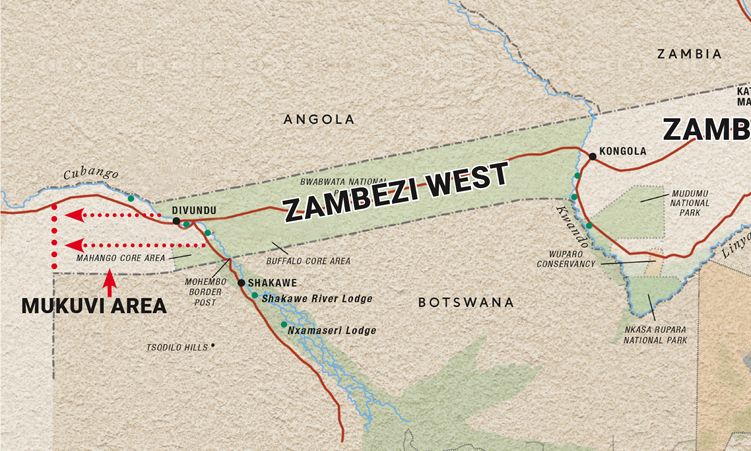The Meat Corporation of Namibia (Meatco), though it suffered a net loss of N$205 million for the 2022 financial year, has bounced back, slaughtering some 16 200 head of cattle during the first four months of 2023 – an increase of 86%.
This is expected to have the state-owned entity’s fortunes turned, especially considering it has received an injection of N$200 million to boost operations.
Recently released financial statements for the year ended 31 January 2022 show that the company saw a decrease in its main source of cattle supply, the southern side of the redline, to the meat producer to 35 127 from 36 074.
Cattle supplied on the northern side of the redline, however, show an increase from 1 258 head of cattle to 2 348.
This has, in turn, lowered revenue to N$752 million and has led to a massive loss the company says could be shortlived.
The bigger picture, according to Meatco’s management, is to connect the dots between big-picture strategy elements and purpose, vision, mission, core values and strategic focus areas, as well as operational activities.
“The company strives to build a dynamic commercial public enterprise that is competitive, profitable and sustainable in order to survive a highly volatile, uncertain, complex and ambiguous global beef industry,” reads the financial statements’ commentary.
Because locals are not selling many animals to Meatco any more, and some keep selling off to South Africa where prices are better, Meatco said it tapped into the Botswana market, and has slaughtered more than 2 000 head of cattle from Botswana.
This follows the 8 November 2021 directive in which the government of Botswana announced it would allow the export of live animals for slaughter from 1 January 2022 to 31 December 2023.
Consequently, the Namibian Cabinet also approved Meatco to import 20 000 head of cattle.
Meatco said it would engage the state to escalate the temporary arrangement to be a permanent arrangement so that cattle from Botswana can augment the shortage of slaughter-ready cattle in Namibia.
The company said it plans to procure another 2 000 head of cattle from Botswana during the 2023 financial year.
To break even, Meatco needs to slaughter at least 60 000 cattle annually for the export market, and according to the financial statements, the 2023 financial year’s figures are expected to be better.
Meatco also wants to still corner the weaners market that are now being exported to South Africa, although it stated that finishing off weaners in the feedlot to quality slaughter weight is costly.
The company said it was committed to sign supply contracts with feeders, and have a fixed-contract pricing mechanism allow Meatco to buy feedlot cattle at lower prices than what Meatco can produce through Okapuka feedlot.
“This will also sustain Meatco’s operations during the off-season from August to January by providing the minimum number of slaughter cattle to keep the abattoir in operation.
“This stream has the potential to deliver 23 500 head of cattle and reduce the number of weaners exported to South Africa annually,” the company said.
Meatco said it is now working closely with the farmers’ associations as agents for organising cattle marketing events at a commission.
In so doing, Meatco is seeking to assemble buying points at strategic locations on the main routes in the farming areas to capture feedlot and slaughter-ready cattle destined for commercial auctions.
During the 2022 financial year, from the 7 657 tonnes of beef and bone-in products available to sell, Meatco allocated 62% of the volume to export markets, which generated 80% total beef and bone-in product revenue.
On this, the company is boastful.
“Through robust marketing strategies the board and management implemented, Meatco remains the only commercial public enterprise in Africa that can export to luxury markets and maintain access for the Namibian beef in the traditional export markets of South Africa, the European Union, the United Kingdom, Norway and Reunion.
“We continued to fill our Norwegian quota as per the allocated tonnage,” the company said.
Meatco exported its first beef consignments to emerging markets China in 2019, and the United States in 2020.
Meatco also developed the strategy for the northern communal area (NCA) and successfully mainstreamed the NCA into the Namibian economy by operating the Katima Mulilo abattoir and marketing certified beef, in line with the Commodity-Based Trade Protocol from the Katima Mulilo abattoir.
“To date, beef from the NCA through our Katima Mulilo abattoir is finding its space in the Ghanaian market, Angola, and the Democratic Republic of Congo as exported through the Commodity-Based Trade Protocol,” Meatco said.
“Through Cabinet directives, official handover and budgetary support from the shareholder, Meatco is prepared to operate Rundu and Oshakati abattoirs to facilitate market access for NCA farmers in potential markets in Africa, the Middle East, and south-east Asia,” the statement said.
Worth N$6,3 billion, Namibia’s livestock farming sector is in dire need of growth, the company said, and growth starts at farm level, but will only happen when it is profitable to producers.
For the 2023 financial year, Meatco has a target to slaughter 60 000 head of cattle procured from south of redline, and 10 000 from producers north of the redline.
The full set of financial accounts are available on Meatco’s website.
– email: bottomline@namibian.com.na
Stay informed with The Namibian – your source for credible journalism. Get in-depth reporting and opinions for
only N$85 a month. Invest in journalism, invest in democracy –
Subscribe Now!






